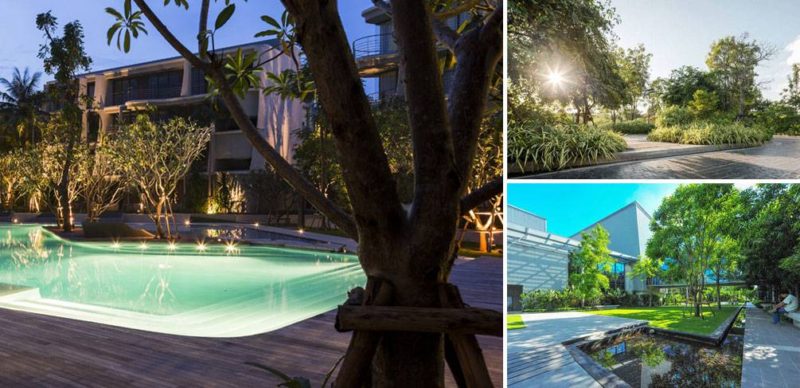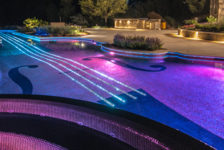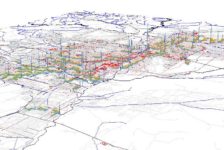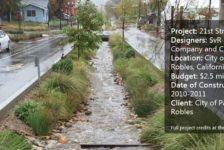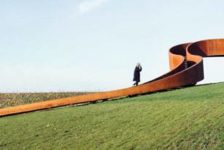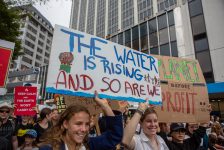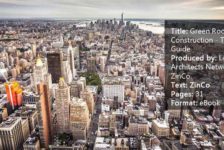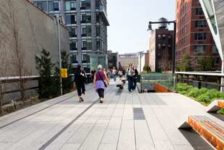Article by Andrea Robezzati Following on in our world series we have selected 10 awesome projects that perfectly represent projects in Thailand today. Take one of the poorest and most problematic countries in the world and imagine finding some of the best examples of landscape architecture. Welcome to Thailand! The place where the worst natural catastrophe in history happened; the place where growing urbanization and climate change problems are the most significant. The tsunami disaster of 2004 left a deep mark on Thailand’s culture and people, and the motto “Build Back Better” became a strong and amazing reality in just a few short years. Let’s check out these excellent examples!
Projects from Thailand
10. Ladprao Condominium Garden, Shma Co. Ltd, Bangkok, 2011 Situated on one of the most congested and polluted roads, with very limited space available, this 3200 m2 garden makes the most of it, both on the ground and in the sky. Shma designed a small, high-density urban forest, with attention to providing the maximum diversity of plants to help purify the air, reduce noise pollution, offer a variety of wildlife habitats, plus secluded space for inhabitants, greatly improving the overall quality of life in the city.
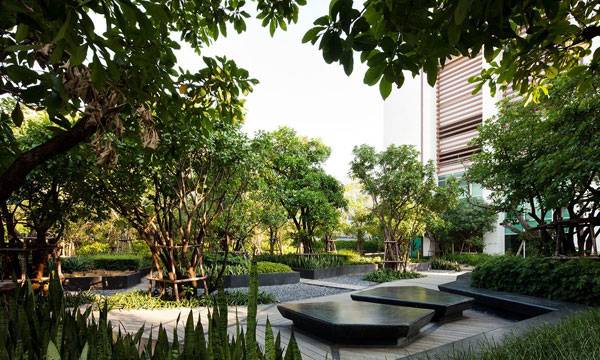
Ladprao Condominium Garden, Shma Co Ltd, Bangkok, Thailand. Photo courtesy Shma Design
Finished in 2014, this design makes you feel wrapped in a warm embrace. Shma Co. Ltd. designed the outdoor areas of a shopping mall and here they proposed a flexible nature to enhance the shopping experience with colourful native plant life, urban furnishings, and cascades, taking special care to use the consummate regional plants. Now it is not just a shopping mall in Chiang Rai, but a generous space for the locals to enjoy; a great balance between natural and manmade environments.

Central Plaza in Chiang Rai by shma.
The landscape design of this park establishes a new dimension for a learning process that expands from classroom and lab into nature and in collaboration with the local community. A contaminated site was transformed into a live laboratory for pharmacy students, researchers, health professionals, school students and also common people that leave locally or in the region. Siree Ruckhachat Nature Learning Park is an open green area where people can make themselves familiar with Thai medicinal plants and receive the best solutions for delivering knowledge of Natural Medication through a natural learning process. The park is also a great example of water management. Plants found on site were unhealthy, with shallow root systems and yellow leaves caused by salty soil and the high level of underground water in the area. The architects decided to replace and stabilize the soil, increase its bearing capacity, facilitate soil filling and provide soil amendment, all of which helped to add nutrients and provide a deeper root zone for plants. A ditch around the outside parameter of the site was created to control the different water levels. A strong example of sustainability to enjoy!
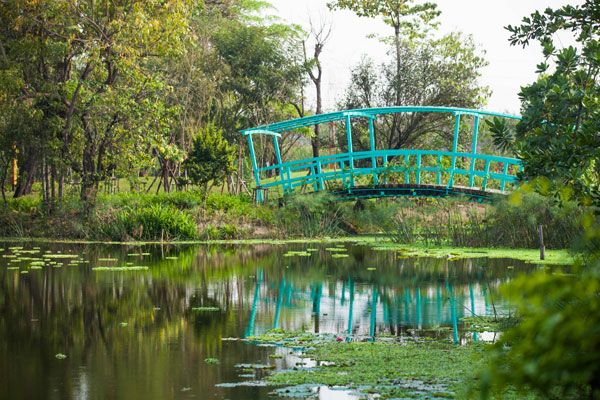
Siree Ruckhachat Nature Learning Park. Axis Landscape Ltd.
Completed in 2015, this masterplan developed under the concept of “Preserved Forest” by maintaining almost 50% of the existing forest on this site. The reservoir plays an important role in collecting and circulating the water system within the campus, creating the balance of a sustainable environment for the present and the future. Having the concept of energy-saving as a main purpose, the short distance between buildings of the campus encourages people to walk rather than using transportation which also creates a better atmosphere of liveliness and safety. In addition, all buildings have been designed with concern towards orientation and energy conservation by facing the natural wind drafts, for ventilation, and by avoiding direct sunlight. This green campus builds up an unbreakable bond and love of nature amongst its population.
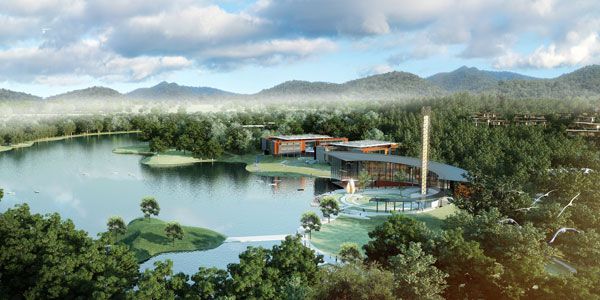
Vidyasirimedhi Institute Of Science and Technology and Kamnoetvidya Science Academy (VISTEC & KVIS) . Photo courtesy of Landscape Architects 49
This center was designed to be in harmony with the existing environment and it shall be considered the prototype of a designed project which combines and integrates the needs of human urban communities and ecology environment well. A walk along its paths and among its buildings means a rising awareness of the importance of environment resources not only in a conserving aspect but also in integrating and promoting a lively urban environment. The main building is designed as a 2-storey structure with an underground Waste Water Treatment Plant (WWTP) facility that permits the recycling of water for the 100-meter-long waterfall of the main building facade. The main floating-landscape viewing area is an educational Aquatic Plants study center; it appears as an open water garden which displays water plants according to their habitats and botanical groupings.
5. Ming Mongkol Green Park, Landscape Architects 49, Saraburi, 2014 Ming Mongkol Green Park has won the Excellence Award in the Public Space category at last year’s Thailand Landscape Architecture Awards. The design team took a disused piece of land next to the highway and turned it into a landscape that responds to local traditions, with regard to both the facilities and the plants. Sustainable design choices were adopted on the buildings, the hardscape surfaces went unsealed to ensure natural drainage runoff, and the client also opted for the incorporation of solar and wind energy. Ming Mongkol Green Park is a great place to get away, it’s very popular with locals and outsiders alike, who travel from Bangkok to visit a place that may be manmade, but that also brings people back to nature and drives awareness of the need to preserve it.
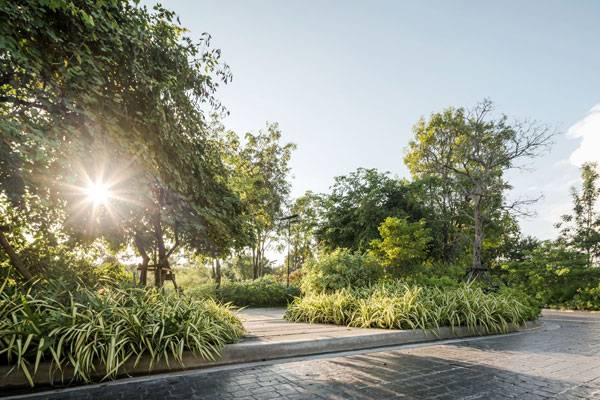
Ming Mongkol Green Park. Image courtesy of Landscape Architects 49 Limited
“Office in the Park” is the concept that XSiTE Studio proposed for the landscape architectural design of the new Thai Public Broadcasting Service headquarters. TPBS is the first national broadcasting organization and this project expresses well its philosophy: interaction with the public. The design of outside spaces is strongly public-oriented and emphasizes the interaction between this public institution and the people it serves. All spaces are connected by a series of dynamic, energetic, networking lines that can be seen from all routing and pavement design. Each outdoor space is created to remind one of a warm welcome. A traditional Thai horticultural mood is used in a new way in order to compliment the cool industrial look of the company buildings.
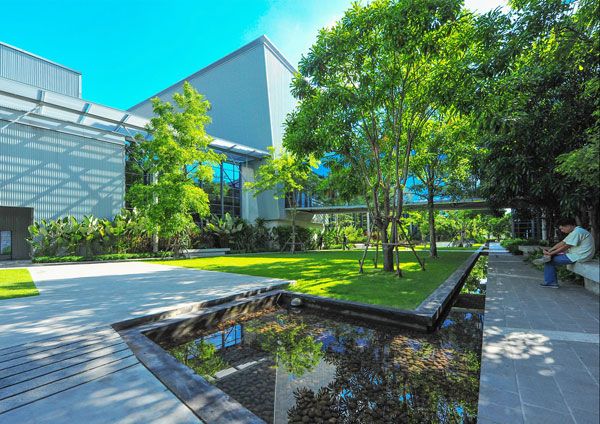
Thai Public Broadcasting Service (Thai PBS) Headquarter. Photo courtesy of XSiTE Design Studio Co., Ltd.
With this project, Sanitas Studio shows how it is possible to envisage land as an abstract form of the ocean. Only 10 per cent of its extensive area borders the beach, meaning that just 2 of 13 residential buildings have a direct sea view. The architects provided a landscape design allowing all residents to feel equally close to the beach, working with different elements that remind one of the nautical theme; islands, seascapes, jungles, villages, and floating houses.
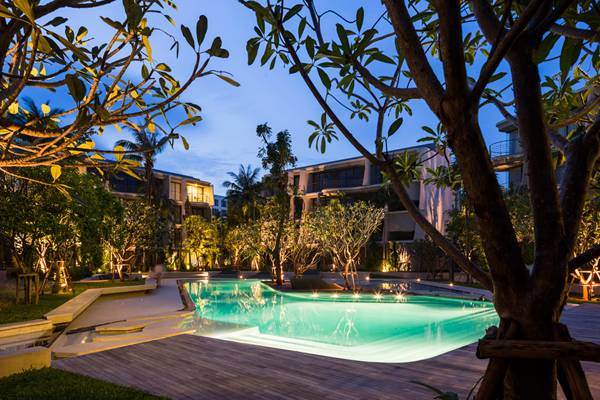
Baan San Kraam by Sanitas Studio. Photo credit: Wison Tungthunya
Established in 2015, this center serves as a natural classroom for those who are interested in learning about the biodiversity of plants on their own. The center is an offshoot of a big Eco-Forest, a natural protection strip that works in the form of an environmentally friendly forest. This big green area is capable of soaking up carbon monoxide at twice the rate the normal forests do and in addition it releases more than 700 tons of oxygen back into the atmosphere per year. It also leads in biodiversity as evidenced by 172 species of existing organisms including birds, insects, mammals, reptiles and amphibians. Eco-Forest is part of a bigger eco-industrial zone development project called “PTT Wanarom Eco Zone Industries” that started in 2012 in the Asia industrial estate. This project aims to develop the area into a prototype for Thailand’s eco-industrial zones and will play a vital role in raising the environmentally-sustainable level of the industries in the Rayong region. The goal is that industries, communities, and environments could exist in a sustainable manner.
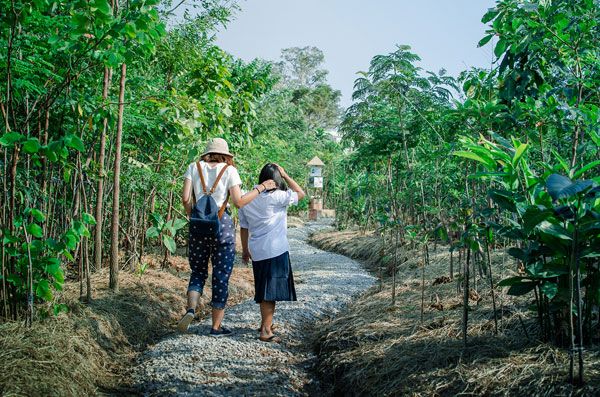
PTT Eco Forest Rayong Wanarom Learning Center. Photo courtesy of KV ART&DESIGN CO.,LTD
Imagine what it’s like to walk in the middle of a jungle during your summer holidays and breathe an indigenous atmosphere! Following the dynamic layout of the site, local flora is everywhere and it leads you around the various buildings scattered throughout the area. The hotel complex stands on the grounds, flanked by two sand dunes between the Mai Khao beach and a lake on the inland side. The role of the pond in the lower part of the location is not only decorative but also functional and very impressive. This extremely beautiful artificial pond is actually used for draining purposes but, at the same time, is also an additional luxury for the rooms in the surrounding wing. This project is another example of the high quality and importance of landscape architecture in Thailand.
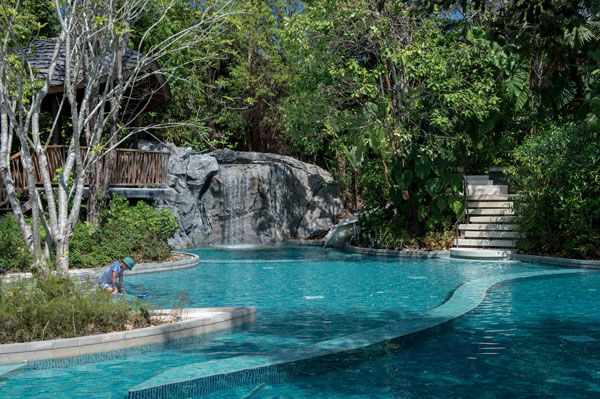
Renaissance Phuket Hotel. Photo courtesy of Landscape Architects 49
These few examples of Thai contemporary landscape architecture demonstrate how landscape design is a greater necessity in contemporary society, especially in the cities where we are registering an incredibly fast-growing urbanization and a strong vulnerability to extreme climate events. Starting from a natural disaster, Thai architects show us how important it is to work with nature and be educated by it: in this way the Thai Eco-Forest program is the perfect expression. The Rayong Wanarom Learning Center and the Bang Sue Environmental Education Center are also fine examples of this.
We have to admit that Thailand’s got really good talent and they send us a lesson: quality design can embrace a new balance between humans and nature! Go to comments Recommended Reading:
Article by Andrea Robezzati
Published in Blog




